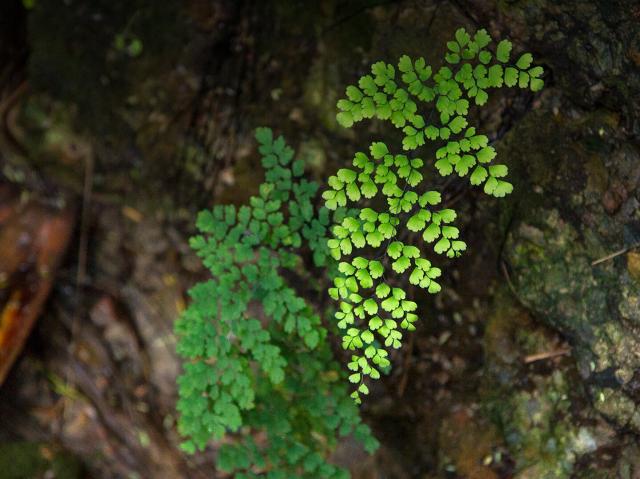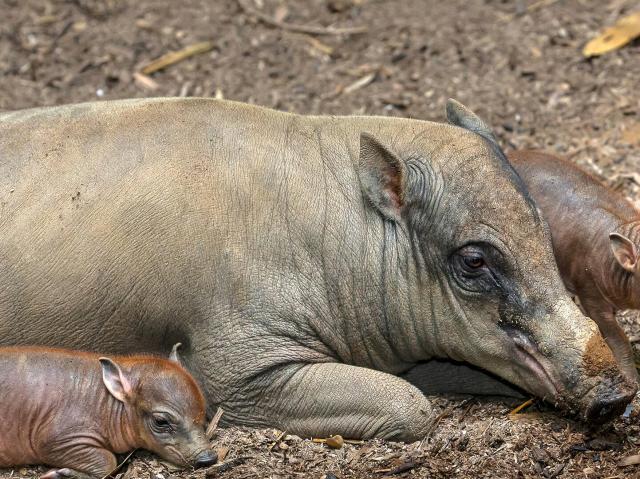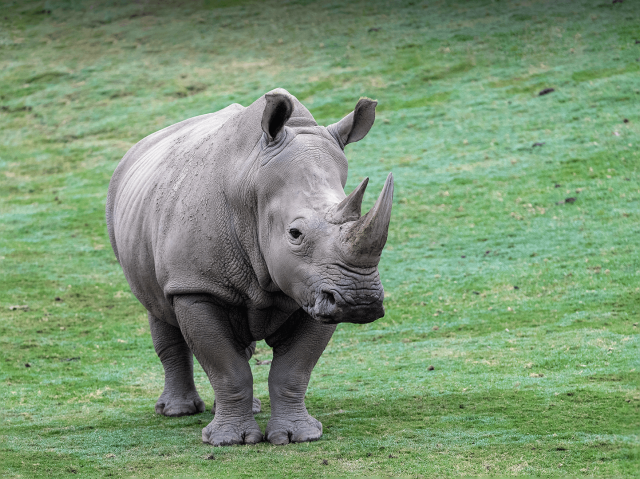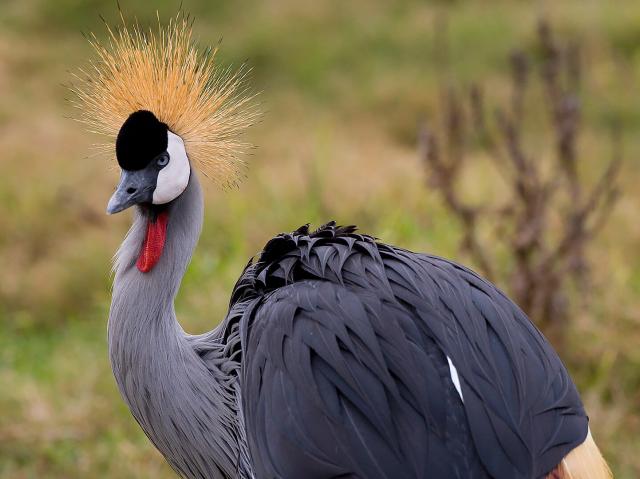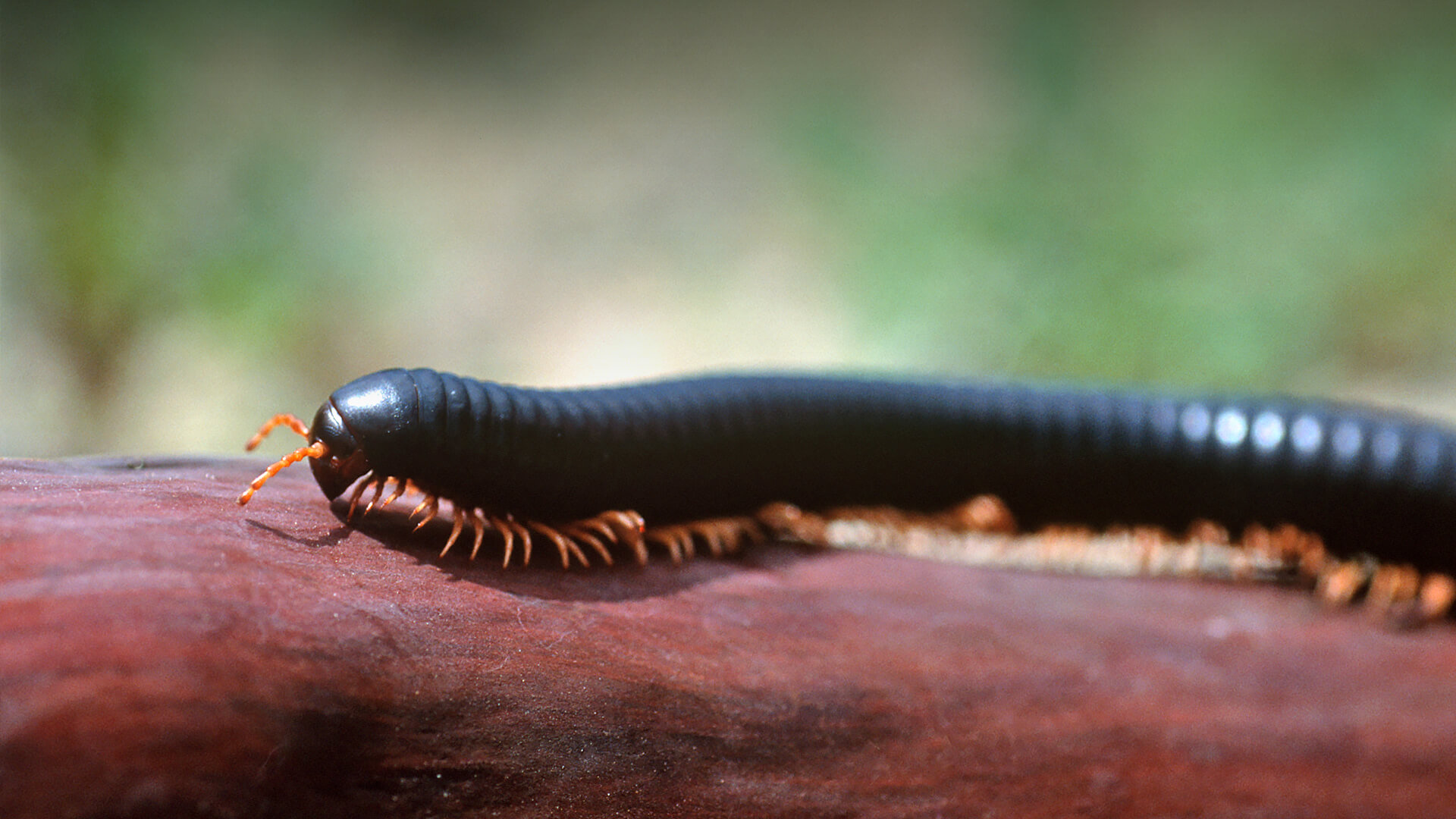
Giant African Millipede

- CLASS: Diplopoda (Millipedes)
- ORDER: Spirostreptida
- FAMILY: Spirostreptidae
- GENUS: Archispirostreptus
- SPECIES: gigas

ABOUT
The arthropod with 1,000 feet? Although the name millipede means “thousand-feet,” most giant African millipedes only have about 300 to 400 legs. The largest of the 10,000 species of millipede, these gentle giants call the rainforests of Africa home.
Millipede means “thousand-feet,” while centipede means “hundred-feet.” Instead of having four legs per body segment, centipedes have two legs per body segment. When it comes to defense, centipedes have fangs and are venomous, meaning they are capable of giving a nasty bite to any potential predators. A millipede has weak jaws and cannot deliver a good bite, so instead it will coil into a ball and secrete a foul fluid from its body’s pores. Since centipedes are venomous, they are usually brightly colored as a warning to predators. Millipedes are typically not as colorful. Finally, millipedes have rounded bodies, unlike centipedes, which have flat bodies.
Giant African millipedes are a large arthropod, classified by a segmented body, an exoskeleton, and many, many legs! They are usually dark brown and black in color, have a rounded body, and range from 4 to 12 inches in length.
Starting at the tip-top of their head, giant African millipedes have two antennae and simple eyes called “ocelli.” They also have a single mouth or “maxilla.” The head segment of the millipede does not have any legs.
The body of the giant African millipede has 40 or more body segments, with four legs (two pairs) per individual segment. Each time a millipede molts, it adds one body segment with four legs. Very large millipedes, with more body segments, can have as many as 400 legs. That’s a lot of feet! Almost every segment of their body also has two pairs of internal organs. Instead of breathing with lungs like mammals, millipedes breathe through tiny pore-like holes located down the length of their body, called spiracles. Because of this special breathing adaptation, if a millipede gets too wet, it could potentially drown.
The African rainforest is a bustling place with a high level of biodiversity, meaning there are many plants and animals that call this habitat home. With that many animal neighbors, giant African millipedes have to defend themselves against many predators. Birds, small mammals, frogs, and various reptiles can prey upon millipedes. With those things in mind, giant African millipedes have a few defense mechanisms to help protect them from becoming someone else’s tasty snack. First, the millipede can curl into a tightly coiled ball. Its exoskeleton is made up of calcareous dorsal plates that act as body armor, and when paired with the “duck and cover” coiled method, it can help protect the millipede from being picked up and carried away. Second, the millipede secretes a fluid (called repungnatorial fluid) from each body segment that smells and tastes foul to potential predators. This concoction deters the predators and causes them to think twice about eating a millipede for a meal.
HABITAT AND DIET
The giant African millipede calls the rainforests of subtropical western Africa home. Giant African millipedes love warm, dark places on the rainforest floor. The most common hiding places include areas near rotting wood and burrows where they can curl up and hide.
Millipedes are a type of organism called a detritivore. Detritivores feed on dead and decaying organic matter within their habitat. This organic matter could be things such as decaying trees, logs, and plants. All of these items are nutrient-rich for a millipede and make up most of their diet. Once digested, millipedes leave their waste or droppings along the forest floor. This excrement is full of helpful nutrients and acts as new soil for the environment.
This particular species of millipede is nocturnal, meaning they come out to forage for food and explore the forest at night. They will crawl along the rainforest floor looking for decomposing material to feed on. The giant African millipedes will also spend this time burrowing into a safe place to rest during daylight hours.
FAMILY LIFE
Communication between millipedes is important! Giant African millipedes have poor eyesight, so their sense of touch seems to play an important role. They can feel with their antennae and their legs, and could possibly communicate by scent as well. This particular species of millipede is not known to vocalize or make sound; unless of course you count the sound of hundreds of legs moving across the forest floor.
Reproducing and creating more millipedes is an important part of life in the rainforest. When the time comes to reproduce, a male giant African millipede will wind around a female millipede. A few weeks later, the female will lay hundreds of eggs in a hole in the ground. After about three months, those eggs will hatch, producing a large group of baby millipedes! The babies are white with only a few segments, and roughly three pairs of legs. The babies will molt their exoskeleton within the first 12 hours after birth, and at least 7 to 10 more times as they grow over several years. Each time they molt, they acquire new segments and legs.
Once a millipede hatches, it is on its own. There is no parental involvement, and it’s up to the new millipede to find food and shelter.
CONSERVATION
Giant African millipedes are currently thriving and doing well in their African rainforest home. However, many other species in Africa are considered threatened or endangered, and need our help.
By supporting San Diego Zoo Wildlife Alliance, you are our ally in saving and protecting wildlife worldwide.
LIFE SPAN
5 to 7 years
YOUNG
Incubation period: 3 months
Number of young at hatch: Hundreds
SIZE
Length: 4 to 12 inches (10 to 30 centimeters)
FUN FACTS
Giant African millipedes can actually smell and taste with all parts of their body!
Based on fossil records, scientists have discovered that millipedes were one of the first animals to colonize land, and could be found in many habitats around the world.
Millipedes are decomposers, so their waste becomes new soil for the rain forest.





